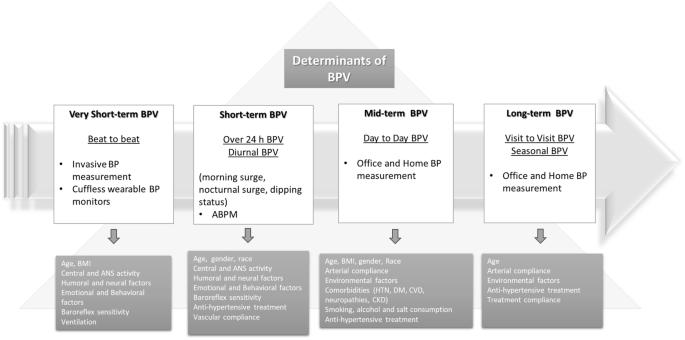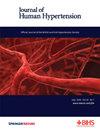探索血压变化与心房颤动之间的联系:当前见解与未来方向。
IF 2.7
4区 医学
Q2 PERIPHERAL VASCULAR DISEASE
引用次数: 0
摘要
心房颤动(房颤)是最常见的心律失常,尤其是在 50 岁以上的人群中,全球有 4000 多万人受到影响。许多研究都强调了高血压与心房颤动发病之间的联系。血压变异性(BPV)是通过在特定时间间隔内使用特定读数记录血压振荡而获得的动态大小。血压变异性受多种内外因素影响,同时也是房颤发病的共同病因。直到最近,BPV 仍只应用于临床前和临床研究,对临床实践没有重大影响。事实上,即使在研究方面,由于对心房颤动患者的测量方法的准确性存在疑虑,BPV 的测定也仅限于无心房颤动的患者。在这篇综述中,我们介绍了目前关于 BPV 和房颤之间共同致病途径的证据、房颤患者 BPV 定量的可靠性、BPV 在这些患者中的预后作用,并讨论了 BPV 在房颤患者中的未来临床意义。本文章由计算机程序翻译,如有差异,请以英文原文为准。


Exploring the link between blood pressure variability and atrial fibrillation: current insights and future directions
Atrial fibrillation (AF) is the most common heart rhythm disorder, especially in people over the age of 50, which affects more than 40 million people worldwide. Many studies have highlighted the association between hypertension with the development of AF. Blood pressure variability (BPV) is a dynamic size obtained by recording blood pressure oscillations using specific readings and at specific time intervals. A multitude of internal and external factors shape BPV while at the same time constituting a common pathogenetic pathway with the development of AF. Until recently, BPV has been applied exclusively in preclinical and clinical studies, without significant implications in clinical practice. Indeed, even from the research side, the determination of BPV is limited to patients without AF due to doubts about the accuracy of its measurement methods in patients with AF. In this review, we present the current evidence on common pathogenic pathways between BPV and AF, the reliability of quantification of BPV in patients with AF, the prognostic role of BPV in these patients, and discuss the future clinical implications of BPV in patients with AF.
求助全文
通过发布文献求助,成功后即可免费获取论文全文。
去求助
来源期刊

Journal of Human Hypertension
医学-外周血管病
CiteScore
5.20
自引率
3.70%
发文量
126
审稿时长
6-12 weeks
期刊介绍:
Journal of Human Hypertension is published monthly and is of interest to health care professionals who deal with hypertension (specialists, internists, primary care physicians) and public health workers. We believe that our patients benefit from robust scientific data that are based on well conducted clinical trials. We also believe that basic sciences are the foundations on which we build our knowledge of clinical conditions and their management. Towards this end, although we are primarily a clinical based journal, we also welcome suitable basic sciences studies that promote our understanding of human hypertension.
The journal aims to perform the dual role of increasing knowledge in the field of high blood pressure as well as improving the standard of care of patients. The editors will consider for publication all suitable papers dealing directly or indirectly with clinical aspects of hypertension, including but not limited to epidemiology, pathophysiology, therapeutics and basic sciences involving human subjects or tissues. We also consider papers from all specialties such as ophthalmology, cardiology, nephrology, obstetrics and stroke medicine that deal with the various aspects of hypertension and its complications.
 求助内容:
求助内容: 应助结果提醒方式:
应助结果提醒方式:


